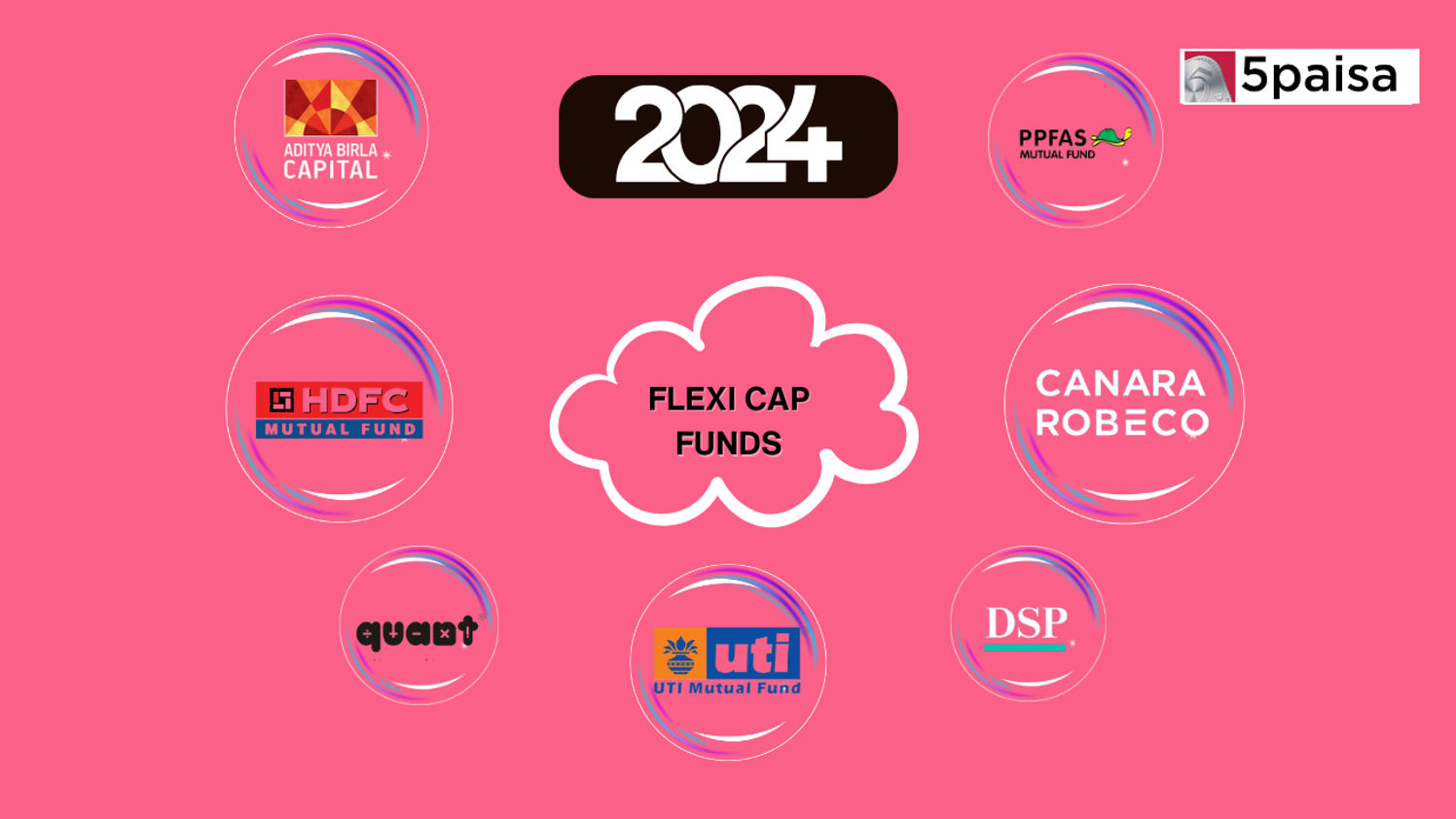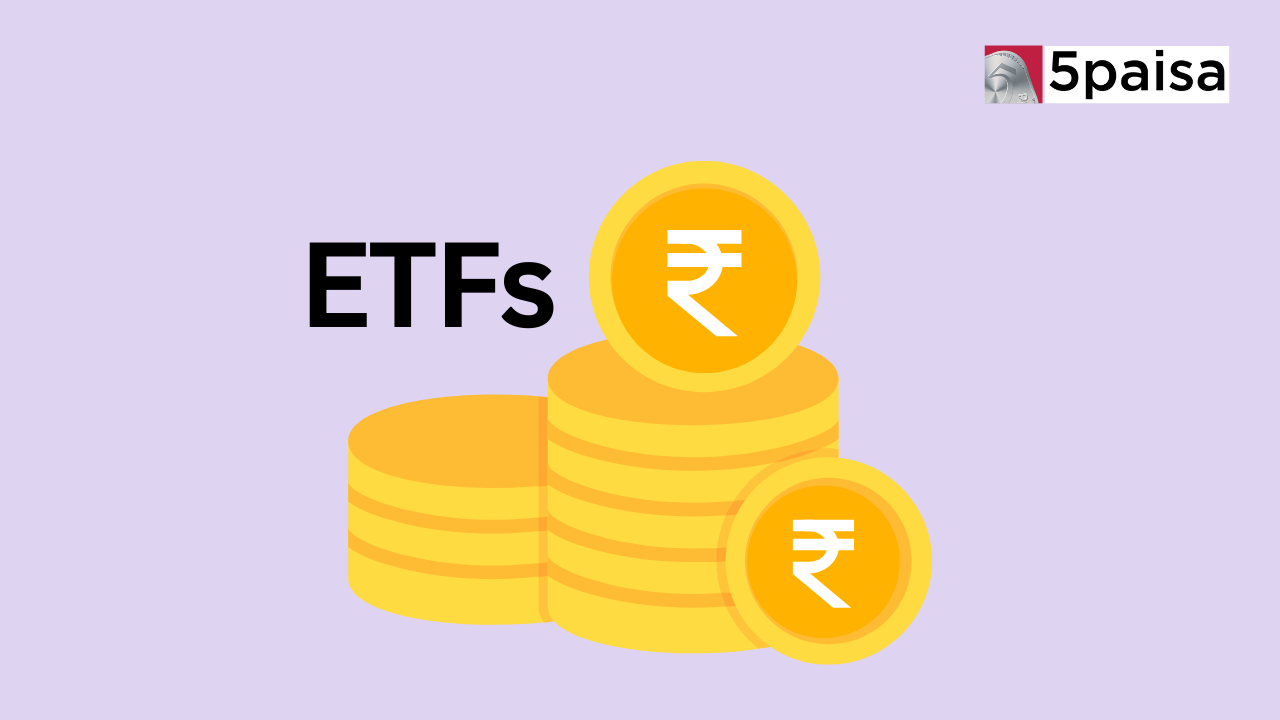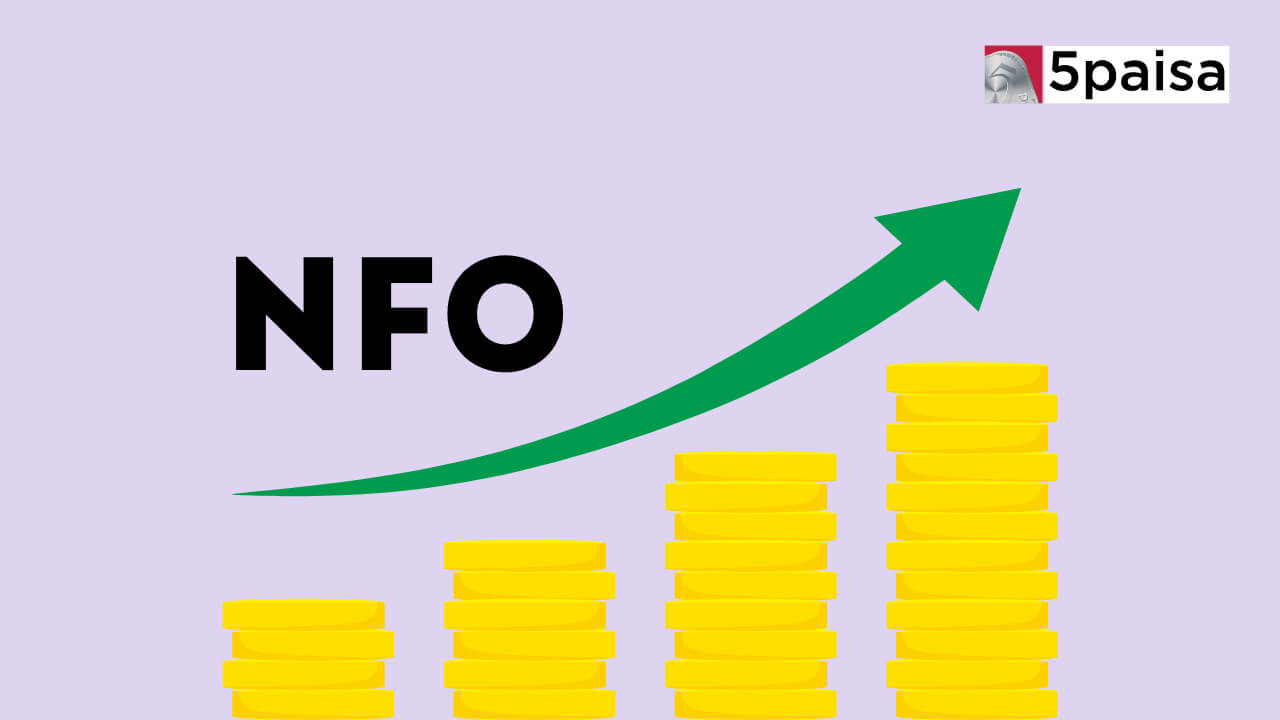Best Flexi Cap Funds for 2024

In the unpredictable market, investors are after mutual funds that bring in good returns. A hot favorite in this category is Flexi Cap funds.
Why the buzz? Well, these funds don't have the usual SEBI restrictions, and they're where a skilled fund manager can work some magic.
If you're aiming to grow your wealth, putting your money in a solid equity fund is key. And among these, Flexi Cap funds are like the MVPs – a unique and versatile choice that can seriously boost your investments. They're the secret sauce for growing your money.
Understanding Flexi Cap Funds
Flexi cap funds are a unique type of mutual funds that allows the funds the freedom to explore different market sizes. What sets them apart is their ability to invest in stocks across the board – whether it's large-cap, mid-cap, or small-cap companies. This flexibility is like a superpower for fund managers, letting them tweak their investment strategy as the market tides change.
The main goal of flexi cap funds is to achieve long-term capital growth by keeping a mix of diverse stocks in their portfolio. This makes them attractive to investors who want higher returns than what large-cap funds offer but still prefer a safer bet compared to the rollercoaster of mid-cap and small-cap funds.
Regulated by the Securities and Exchange Board of India (SEBI), flexi cap mutual funds fall into the equity-focused category. Here, at least 65% of the fund's total assets are parked in equity and equity-related instruments, while the remaining 35% finds its place in debt or other instruments.
Flexi cap mutual funds provide fund managers with the flexibility to invest across various market capitalizations and sectors/themes. This means these managers have the freedom to invest wherever they see potential in the market. Typically recommended for moderate investors aiming to build wealth over an extended period, it's advisable to consider a five to seven-year investment horizon when diving into flexi cap schemes.
As mentioned earlier, the beauty of these schemes lies in the manager's freedom to invest based on their market outlook. For instance, in a bullish market, they might lean towards mid or small cap stocks, while in a different scenario, large cap stocks could be the focus. However, it's crucial for investors to approach this flexibility with caution.
Choosing the right flexi cap scheme requires aligning it with your risk tolerance. Not all schemes are created equal, and some may lean more towards conservatism while other may be more aggressive. It's essential for investors to identify a scheme that resonates with their risk appetite and investment temperament. So, tread carefully and find the one that suits you best.
Flexi Cap v/s Multi Cap v/s Large and Mid Cap
Let's delve into a comparison between flexi cap funds and other mutual fund categories, specifically multi-cap funds and large & mid-cap funds.
Multi-Cap Funds
Diversify investments across companies of varying sizes, including large, medium, and small.
Mandated to allocate a minimum of 25% of their portfolio to each of the large-cap, mid-cap, and small-cap stocks.
Provide diversification benefits but may lack the dynamic flexibility seen in flexi cap funds for adjusting allocations.
Large & Mid-Cap Funds
Invest in both large and mid-sized companies.
Adhere to specific rules concerning capitalization, contrasting with the liberty offered by flexi cap funds.
Have a similar allocation obligation as multi-cap funds, with a minimum of 35% each to large-cap and mid-cap stocks. Flexi cap funds, on the other hand, face no such restrictions.
Flexi Cap Funds
Can invest in companies of any size.
Offer unmatched flexibility in adjusting the portfolio's asset allocation based on prevailing market conditions.
This flexibility stands as a clear advantage, granting fund managers the freedom to make strategic moves, making flexi cap funds a preferred choice for many investors.
Key Features of Flexi Cap Funds
Diversification
Flexi cap funds allow investors to diversify their investments across various industries, market capitalisations hence reducing the risks related to the downturns in a specific sector.
Ability to adapting to market conditions
Since these funds are not bound by any restrictions in market cap or category, these funds have the flexibility to alter their investment strategy in response to changing market dynamics, ensuring optimal performance across different market scenarios.
Potential for Enhanced Returns
By investing in companies of all sizes, flexi cap funds open the door to higher growth opportunities, tapping into the full spectrum of the market.
Balanced Risk Management
The diversified nature of flexi cap funds aids in distributing investments across different sectors and market caps, acting as a safety net during periods of market uncertainties.
Best performing Flexi Cap funds in 2023
Here are the best performing Flexi Cap funds of 2023 based on annual returns.
|
Scheme Name |
AuM (Cr) | 1Y | 2Y | 3Y | 5Y | 10Y |
| JM Flexi Cap Fund - Direct - Growth | 862.36 |
44.95% |
22.46% |
25.62% |
22.93% |
21.03% |
|
558.66 |
42.71% |
18.18% |
26.97% |
- | - | |
|
8,896.26 |
40.32% |
13.84% |
14.22% |
13.96% |
- | |
| 1,314.89 | 39.41% | - | - | - | - | |
| 48,293.88 |
39.33% |
14.36% |
23.46% |
23.95% |
20.46% |
|
| Nippon India Flexi Cap Fund - Direct Plan - Growth |
5,260.05 |
36.81% |
14.54% |
- | - | - |
| 2,457.78 |
35.90% |
21.07% |
32.11% |
28.35% |
24.80% |
|
| WhiteOak Capital Flexi Cap Fund - Direct Plan - Growth |
2,655.31 |
35.65% |
- | - | - | - |
| Mahindra Manulife Flexi Cap Fund - Direct Plan - Growth |
1,162.50 |
35.57% |
15.98% |
- | - | - |
|
10,067.00 |
34.95% |
11.77% |
18.16% |
19.74% |
18.12% | |
| 3,977.03 | 34.49% | 11.82% | 19.00% | 17.28% |
16.70% |
|
| 13,791.53 | 34.42% | 16.44% | 23.29% |
19.45% |
18.74% | |
| 1,412.05 | 34.17% | 15.31% | 21.28% | 18.99% | - | |
| HDFC Flexi Cap Fund - Direct Plan - Growth | 45,992.54 | 33.53% | 22.92% | 27.44% | 19.85% |
18.62% |
Now, the annual returns do not paint the actual picture, to correctly analyze a fund, you need to consider the rolling returns, outperformance over the benchmarks, and the downside risks involved.
According to these parameters our favorite funds are:
| Funds |
1 Yr Ret (%) |
3 Yr Ret (%) |
NIFTY500 TRI |
Expense Ratio (%) |
Standard Deviation |
Beta | Sharpe Ratio |
|
37.45% |
22.34% |
28.52% |
0.62 |
12.69 |
0.7 | 1.11 | |
| HDFC Retirement Savings Fund Equity Plan - Direct Plan | 35.46% | 27.51% | 28.52% | 0.72 |
12.91 |
0.85 | 1.37 |
Note: Risk ratios have been updated as of November 30, 2023.
Standard Deviation value gives an idea about how volatile fund returns have been in the past 3 years. Lower value indicates more predictable performance. So if you are comparing 2 funds (lets say Fund A and Fund B) in the same category. If Fund A and Fund B have given 10% returns in last 3 years, but Fund A standard deviation value is lower than Fund B. So you can say that there is a higher chance that Fund A will continue giving similar returns in the future also whereas Fund B returns may vary.
Beta value gives an idea about how volatile fund performance has been compared to similar funds in the market. Lower beta implies the fund gives more predictable performance compared to similar funds in the market. So if you are comparing 2 funds (lets say Fund A and Fund B) in the same category. If Fund A and Fund B have given 10% returns in last 3 years, but Fund A beta value is lower than Fund B. So you can say that there is a higher chance that Fund A will continue giving similar returns in the future also whereas Fund B returns may vary.
Sharpe ratio indicates how much risk was taken to generate the returns. Higher the value means, the fund has been able to give better returns for the amount of risk taken. It is calculated by subtracting the risk-free return, defined as an Indian Government Bond, from the fund’s returns, and then dividing by the standard deviation of returns. For example, if fund A and fund B both have 3-year returns of 10%, and fund A has a Sharpe ratio of 1.30 and fund B has a Sharpe ratio of 1.25, you can choose fund A, as it has given higher risk adjusted returns
Taxation on Flexi Cap Funds
Considering the taxation aspect is paramount for investors. Flexi cap funds follow equity-oriented investment rules, subject to Long-Term Capital Gains (LTCG) Tax and Short-Term Capital Gains (STCG) Tax.
LTCG Tax: Holding investments for more than a year attracts a 10% tax. The first ₹1 lakh per year is exempt from taxes.
STCG Tax: Withdrawing investments within a year results in a 15% tax.
The tax regime in India keep on changing every year and hence Investors should stay informed about potential changes in tax rules and consult tax experts for the latest updates.
Also read about: Best Small Cap Funds for 2024
Conclusion
Investing in flexi cap funds offers investors a unique avenue to create a tailored financial strategy. Start by defining your investment objectives—whether it's growth, safety, or a balanced approach. Consulting with financial experts or conducting thorough research is essential to identify flexi cap funds aligned with your goals.
Numerous platforms and companies offer flexi cap funds, and it's prudent to take the time to assess their performance, investment strategy, and the expertise of fund managers. Flexi cap funds act as a versatile tool in your financial toolbox, providing a blend of growth potential and risk management.
- 0% Commission*
- Upcoming NFOs
- 4000+ Schemes
- Start SIP with Ease
Trending on 5paisa
Mutual Funds and ETFs Related Articles
Disclaimer: Investment in securities market are subject to market risks, read all the related documents carefully before investing. For detailed disclaimer please Click here.

 5paisa Research Team
5paisa Research Team
 5paisa Research Team
5paisa Research Team
 Sachin Gupta
Sachin Gupta




